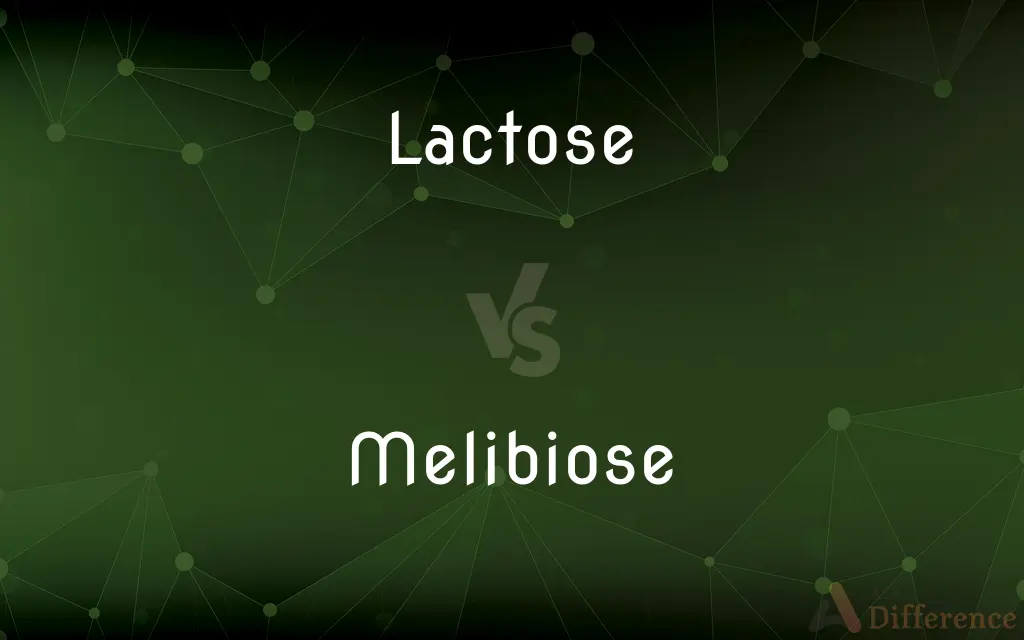Lactose vs. Melibiose — What's the Difference?

Difference Between Lactose and Melibiose
ADVERTISEMENT
Compare with Definitions
Lactose
Lactose is a disaccharide. It is a sugar composed of galactose and glucose subunits and has the molecular formula C12H22O11.
Melibiose
Melibiose is a reducing disaccharide formed by an α-1,6 linkage between galactose and glucose (D-Gal-α(1→6)-D-Glc). It differs from lactose in the chirality of the carbon where the galactose ring is closed and that the galactose is linked to a different point on the glucose moiety.
Lactose
A white crystalline disaccharide, C12H22O11, found in milk, that may be hydrolyzed to yield glucose and galactose. Refined lactose obtained from whey is used in infant foods, bakery products, confections, and pharmaceuticals as a diluent and excipient. Also called milk sugar.
Melibiose
(carbohydrate) A disaccharide consisting of glucose and galactose residues
Lactose
(carbohydrate) The disaccharide sugar of milk and dairy products, C12H22O11, a product of glucose and galactose used as a food and in medicinal compounds.
ADVERTISEMENT
Lactose
The main sugar present in milk, called also sugar of milk or milk sugar. When isolated pure it is obtained crystalline; it is separable from the whey by evaporation and crystallization. It is a disaccharide with the formula C12H22O11, being chemically 4-(
Lactose
See Galactose.
Lactose
A sugar comprising one glucose molecule linked to a galactose molecule; occurs only in milk;
Cow's milk contains about 4.7% lactose
Share Your Discovery

Previous Comparison
Existentialism vs. Solipsism
Next Comparison
Source vs. Channel














































